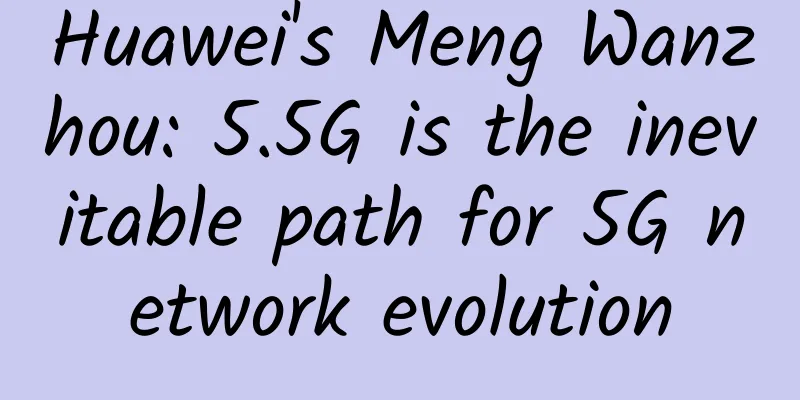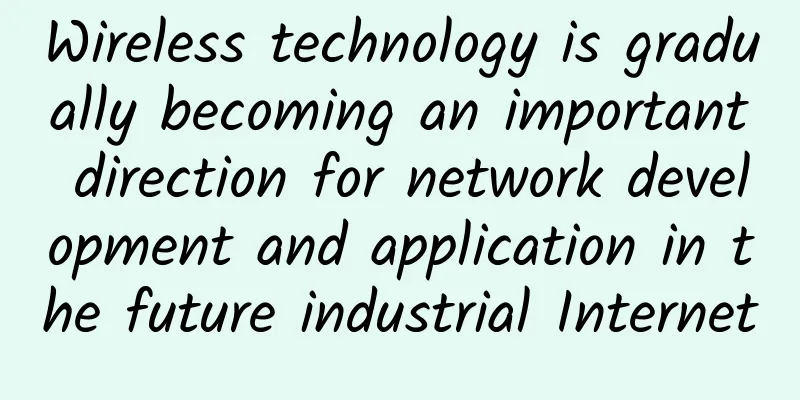Huawei's Meng Wanzhou: 5.5G is the inevitable path for 5G network evolution

|
On June 28, 2023 MWC Shanghai opened, and Huawei Vice Chairman, Rotating Chairman, and CFO Meng Wanzhou delivered a keynote speech entitled "Embracing 5G Transformation" at the conference. She said that in the four years since the global 5G commercialization, it has continued to lead value creation, and 5.5G is the inevitable path; looking to the future, technology will move towards complex large systems, and it is necessary to match key technologies based on scenario characteristics and implement system engineering to continuously build 5G's commercial success. The following is part of the speech by Huawei's Vice Chairman, Rotating Chairman, and CFO Meng Wanzhou: 5G continues to create three major valuesScience fiction can only outline the future, but technology can make our imaginations come true. 5G has been commercially used around the world for four years. From thousands of industries to millions of households, we have seen that 5G commercialization is changing our lives and production, and is continuously creating commercial value, industrial value, and social value. In the consumer sector: 5G, cloud, and AI trigger a chain reaction, turning “buyers” into “sellers”; in the industry sector: 5G has become part of productivity, the speed of focus is accelerating, firm strategic patience, in-depth industry scenarios, and continuous optimization around input and output have enabled 5G to gradually gain a foothold in industry applications. In the future, new applications and new terminals will emerge in an endless stream. 5G new calls and naked-eye 3D will bring immersive interactive experiences. In the era of "things over people", mobile networks will evolve from serving people to serving things, and continue to improve along the path of serving production. 5.5G is the inevitable path for the evolution of 5G networks. The network characteristics of 5.5G networks, including 10G downlink, 1G uplink, 100 billion connections, and endogenous intelligence, have been clarified. From 5G to 5.5G, it will better match scenarios such as human connection, Internet of Things, perception, and high-end manufacturing, and incubate more new business opportunities. “Upgrading” 5G to build sustainable commercial success of 5GThe ladder to success lies not only in the continuous evolution of single-point technology, but also in matching appropriate technology based on scenarios and needs, and moving upward through systems engineering methods. After the commercial use of 5G, people have stronger and stronger expectations for breakthrough and leapfrog innovation. How 5G can reach a new level and develop in depth has become a new proposition. It is necessary to match key technologies and implement system engineering based on scenario characteristics. We must go deep into the scenarios, understand the pain points, and adopt a system engineering mindset. We must work with customers, developers, peers, partners and other upstream and downstream parties, focusing on the entire cycle of R&D, procurement, supply and marketing. We must grasp modeling, solving and optimization, tools and methods to build the sustainable success of 5G business. Forging system integration capabilities and exploring the future of the communications industryThe digital infrastructure of the future intelligent world will be deeply integrated with society, life, and industry. It is not the evolution of a single point technology, but a large-scale complex system, a combination of multiple factors, which requires systematic thinking and design. When watching a chess game, one should have a global view; when making a move, one should make a detailed layout. On the road to 5G commercial success, the systematic ability of technology integration and management change is particularly important. First, it is the ability to integrate technology. Through global, cross-domain systematic design and innovation, we can achieve the coordination of cloud, pipe, edge, and end; jointly optimize software, hardware, core, and computing; and cope with the challenges of solution complexity brought about by the different scenarios of thousands of industries; Second, it is the ability to manage change. Digital and intelligent transformation is not just a technical issue. More importantly, it is about management change. It requires restructuring an organization’s people, things, and principles, and responding to future challenges with forward-looking and open management ideas.” The development of information technology represented by 5G and 5.5G, AI, and cloud is also setting sail and moving forward. A better landscape is always ahead. Let us jointly promote industrial development and create a better tomorrow. |
<<: Building a smarter world with 5.5G
>>: The role of satellite communications in smart cities: enhancing urban connectivity
Recommend
PoE Troubleshooting Guide: Common Problems and Solutions
Power over Ethernet (PoE) is a revolutionary tech...
API Gateway Selection: I use OpenResty!
Today I want to talk to you about the topic of ga...
Do you turn off your wireless router when you go to bed at night? Don't worry about radiation
A strange theory about wireless routers has appea...
OneTechCloud VPS Hosting 20% off, US CN2 GIA/Hong Kong CN2/CMI large bandwidth/high defense optional
OneTechCloud (Yikeyun) launched this year's s...
Flash is dead, and its first victim appears: the router can no longer log in
Flash was once the memory of a generation, but it...
Wireless Technology Review in 2016: 3.5 GHz Prompts New Changes in Spectrum Sharing
According to foreign media reports, in the past y...
Five ways to establish effective communication in remote teams
The term "remote" itself has a connotat...
5G and IoT: A closer look at how the next generation of mobile connectivity will unlock new opportunities
The arrival of 5G has been heralded as a pivotal ...
It is estimated that by 2025, China's 5G users will reach 739 million
In terms of annual mobile data consumption, it is...
How to set up a backup internet connection for your home office
For work from home, one factor that businesses mu...
Agency: U.S. wireless carriers' capital expenditures are expected to increase significantly to $35 billion in 2021
Wall Street analysts at Deutsche Bank's resea...
5 Easy Ways to Check Open Ports on Linux
An open network port is the simplest access point...
China Mobile announces the results of a 5G order worth 38 billion yuan. Huawei is the big winner. Full-screen mobile phones depend on it.
Huawei is the biggest winner in 5G big orders Rec...
Gartner: China's IT spending is expected to grow 7.7% in 2021
According to the latest forecast by Gartner, the ...
5G technology will unleash the huge potential of smart cities and the Internet of Things
Imagine a city where self-driving vehicles commun...









